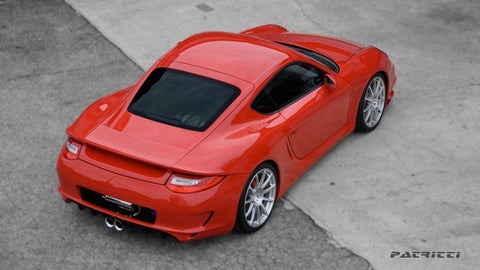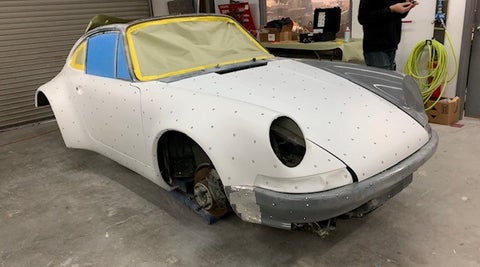For the most of us, a Porsche is an amazing high-performance sports car. Built in Germany, they combine a classic sports look with state-of-the-art engineering to offer glamour and amazing performance to the automotive world.
That being said, for some people, a stock Porsche is not enough, especially with regards to the older models. If you are interested in racing your Porsche, particularly the older models, you might not find it so convenient for it to be made of steel. This is where Patrick Nguyen and his team at Patritti Design Performance step in. One of their specialties is to reproduce, fit and replace existing body panels with replacements made of composites. This process is extremely delicate, requiring the finest of skills.

Traditionally, moulds for parts were made directly on the car body and reused to reproduce the mould. The process was tedious and messy. 3D scanning seemed like the ideal solution for Patrick and his team. “Although we were starting to see handheld technology available on the market, none was able to properly capture an object the size of a car.” None, of course, until Patrick came across peel 3d.

“Not only can it manage large scans as well as accurately capture the subtle shapes and geometries of a car, peel 3d software also offers the necessary tools to clean the data and isolate important information.” Using 3D scan data has tons of advantages in these projects. The device being contact-free is a good start. It’s always better not to touch a car whenever possible ?!
Cars often being symmetrical from side to side, having a digital model also allows to make perfectly symmetrical mirrored models; a simple feature that saves a lot of time! Say for instance that the left wing has been dented or is even missing. No problem! Scan the right, perform a mirror operation and you have your left wing ready. Easy to do virtually but excessively challenging to do manually!
Once the shape of the car captured, it is converted to a CAD model, sent to a CNC machine to carve out the foam replica, and then used as the mould to build the composite part. Manufactured parts are then finished to perfection by hand, fitted on the car, and painted.

The result is flawless and truly impressive! This is how you use a peel 3d to accelerate the development of Porsche cars for racing!